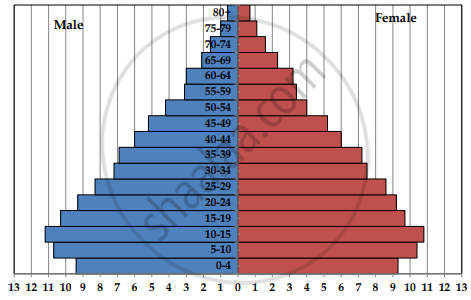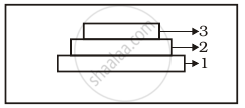Advertisements
Advertisements
Question
Given below is the Age Pyramid of the population in one of the states in India as per 2011 census. It depicts the male population on the left-hand side, female population on the right-hand side, newborns towards the base and gradually increasing age groups as we move from base to the top, with the oldest population at the top. Study this pyramid and comment upon the appropriateness of the Assertion and the Reason.

Percentage to the total population
Assertion: It is a stable population.
Reason: The pre-reproductive and reproductive individuals are almost in equal numbers and the post-reproductive individuals are relatively fewer.
Options
Both A and R are true and R is the correct explanation of A.
Both A and R are true and R is not the correct explanation of A.
A is true but R is false.
A is False but R is true.
Solution
Both A and R are true and R is the correct explanation of A.
APPEARS IN
RELATED QUESTIONS
(a) Name the two growth models that represent population growth and draw the respective growth curves they represent.
(b) State the basics for the difference in the shape of these curves
(c) Which one of the curves represents the human population growth at present? Do you think such a curve is sustainable? Give reason in support of your answer.
How does an age pyramid for human population at given point of time helps the policy-makers in planning for future.
What is an age-pyramid?
Define the Carrying capacity.
Answer the following question.
What is "population" according to you as a biology student?
Mention the different ways by which the population density of different species can be measured.

Label the three tiers 1, 2, 3 given in the above age pyramid.
List any four characters that are employed in human population census.

Identify the type of pyramid given above. Write the identifying feature on the basis of which you identified it.
The number of lily plants in a pond was found to be 50. After one year, the number. increased to 65. Calculate the natality of lily plants.
